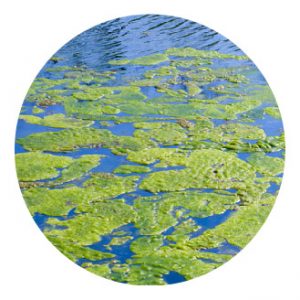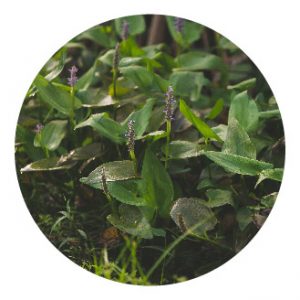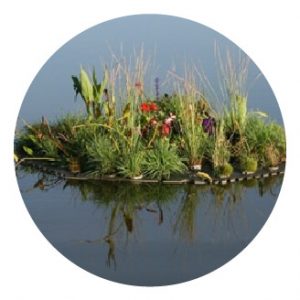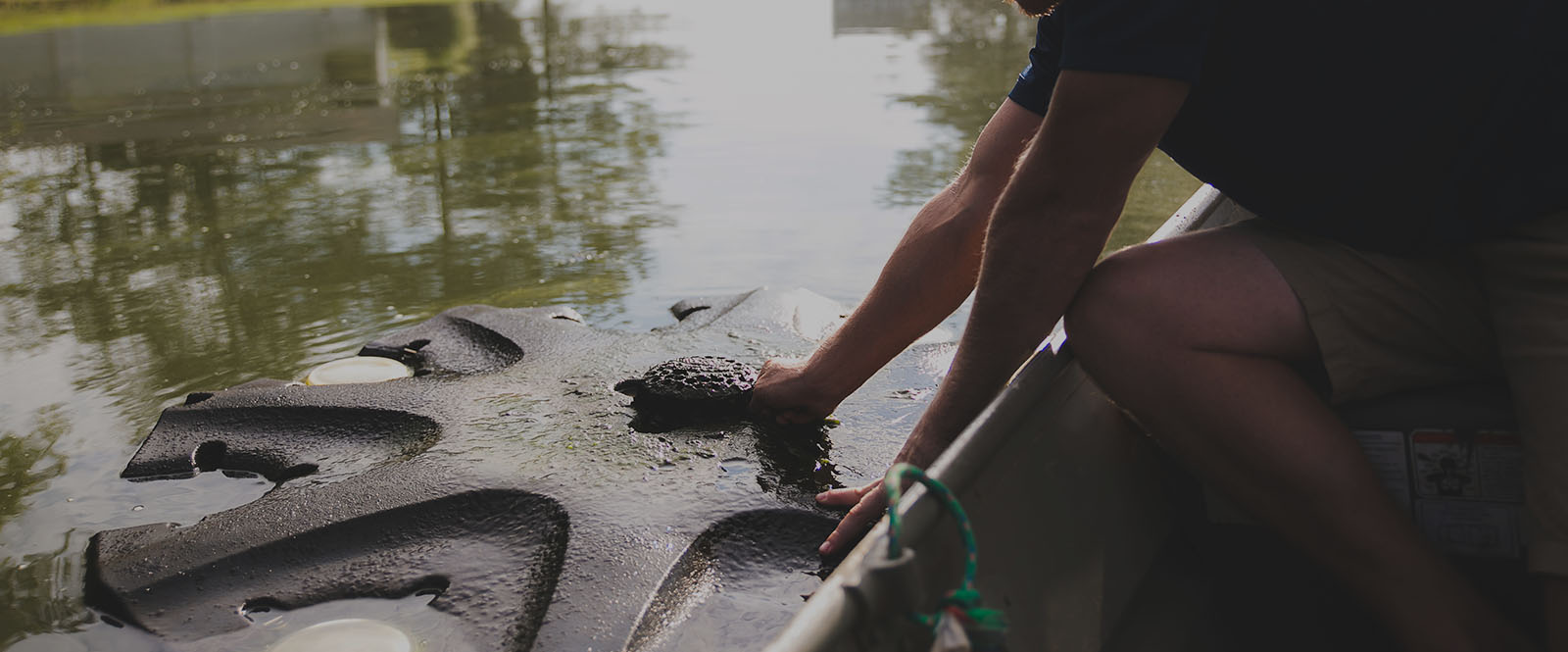aquatic assessments
A pond is just like a lawn. It needs routine maintenance or it will require expensive renovation. In order to properly manage algae and aquatic vegetation, the first step is to conduct an assessment of the pond or lake. Our personnel are highly qualified in collecting the appropriate information to make the correct management recommendations. Informational parameters may include:
- Lake / Pond Size
- Algae Type(s) Present
- Water Level
- Vegetation Type(s) Present
- Temperature
- Visibility
- pH
- Water Color
- Objectives
- Regulated Stormwater BMP Determination
- Fish / Aquatic Organisms Present

algae control
“Isn’t there anything I can put in my pond to take care of those nasty weeds?”
Algae problems often start very early in the season. If we can get it controlled before it starts growing actively, produces gas bubbles and floats to the surface costs can be reduced. Algae can grow very fast and get very ugly. Fortunately, we have liquid and granular algaecides, beneficial bacteria/enzyme products, mechanical aeration/circulation devices, nutrient reduction techniques and mechanical removal tools available to us. Effective algae reduction often takes multiple tools and an integrated approach.
vegetation control
Unwanted aquatic vegetation is one of the most troublesome pond problems. Control methods include: biological (fish that eat plants); chemical treatment (aquatic algaecides and herbicides), cultural (beneficial plantings) and mechanical (pulling, cutting and raking). Biological control is usually the recommended long-term solution. Sterile grass carp can be extremely effective but require time. Pond treatments may be quick, but require care. The type of vegetation must be identified correctly. Treatments must be mixed and applied properly.
Often special equipment is necessary for effective chemical application. Improper use of treatment products may kill many fish. We are licensed applicators of aquatic herbicides and pesticides. New aquatic herbicides are available which are effective, relatively long-lasting and safe. We often spray nuisance aquatic vegetation for immediate control, apply a colorant to limit light penetration or a probiotic enzyme/bacteria product to inhibit new growth, and then stock sterile grass carp for long-term control.


treatment tools
“I’m worried about putting aquatic algaecides and herbicides into my water because I don’t want to kill the fish.”
Most Integrated Pest Management (IPM) programs are designed to provide the longest lasting least expensive solution to the pest (in this case nuisance vegetation) problem. Many solution prescriptions start with chemical pesticides. Contact treatments kill what they contact even if it is only part of the plant. Systemic treatments are absorbed by the plant and can kill the entire plant. Excellent aquatic algaecides and herbicides are available today.
Some are very selective, can be applied in very small concentrations and are very safe to the environment. We have the experience and commitment to sustainable lake and pond management to recommend the best vegetation management solution for your problem.
biological tools
We have always placed a great emphasis on biological treatment tools to aid in an invasive IPM program. Sterile (triploid) grass carp are the best long-term control measure for most types of nuisance aquatic weeds. We recommend 20 sterile grass carp (10-12”) per “vegetated” acre. We sell and stock sterile grass carp all year long (except July and August when temperatures are just too warm!).
cultural tools
Reduction in the amount of nutrients in your water body is highly advisable. Several good biological tools have been introduced on the market recently. Floating islands are a great way to beautify your pond and reduce nutrients at the same time. These large “islands” are stocked with pots of nutrient-gobbling plants that help to minimize nutrients available for nuisance plant growth.
mechanical tools
Although the principal is good, mechanical removal of vegetation requires a tremendous amount of effort. Aquatic vegetation is very heavy and usually must drain or dry before being hauled off or otherwise disposed. Then, the effort may have only encouraged it to spread or become more abundant. Nevertheless, you will have removed significant volumes of plant material completely from the lake or pond. That may make it worth the effort.


